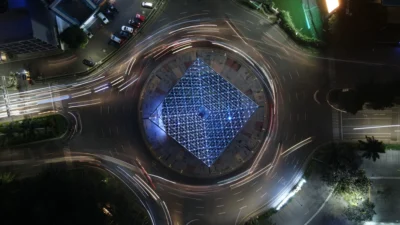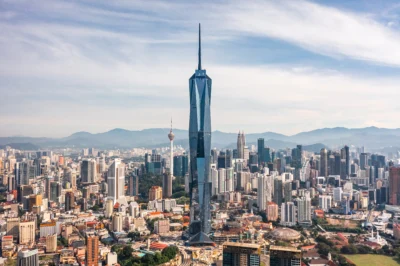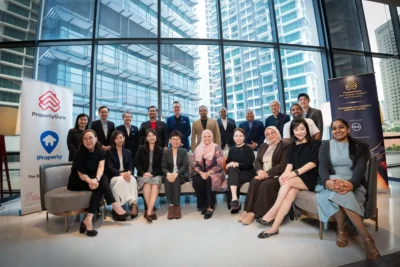How sustainability will drive Asian markets to succeed in a greener future

A veteran of Asia’s eco-friendly revolution, Louise Chua wants a greener tomorrow, today
Louise Chua, project director for the building and energy cluster at Reed Exhibitions Singapore that organises the Build Eco Xpo Asia (BEX Asia), an annual exhibit attended by thousands of industry professionals and trade specialists, is proud to declare that she is part of Asia’s green and sustainability movement.
After more than two decades spent in organising events across various industries, from construction to forestry to electronics manufacturing, Louise Chua knows better than most in the region about ‘going green’. As project director for Reed Exhibitions Singapore, organisers of the Build Eco Xpo Asia (BEX Asia), one of the region’s biggest green building and technology showcases, she has been at forefront of introducing and educating industry professionals and trade specialists about the benefits of sustainability.
We recently sat down with Chua to discuss the increased awareness of eco-initiatives that has helped propel the expo’s growth over the past seven years, and how sustainability will drive Asian markets to succeed in a greener future.
What inspired you to help push the green agenda in Asia?
There is a huge potential for growth in Asia, and more so with the increasing awareness of ‘going green’. Asia has been behind its Western counterparts and it’s only a matter of time that we catch up. BEX Asia’s journey in the sustainability movement started in 2008 and we are encouraged by the industry’s support to deliver value to engage this community.
In Singapore where I am based, the government has consistently pushed the green agenda and put in place initiatives to encourage the movement. There is no better opportunity to engage people on board, especially at the industry level but now. Year on year, BEX Asia hopes to further engage and influence more building owners to build green and create a sustainable built environment, in line with Singapore government’s third Green Building Masterplan.

Aside from efficiency and energy-saving benefits, are there any long-term financial gains for real estate and construction companies that choose to ‘go green’?
There are definitely long-term financial gains. Companies who choose to go green now are likely to incur lower operating costs in the long run. Research has shown that green buildings tend to use less energy and water and are therefore cheaper to own and operate. Naturally, such buildings will be more attractive to prospective tenants since energy and water costs are major considerations relative to overall rental costs. It also helps companies get ahead of competing businesses by going green earlier than later.
Construction firms certainly have long-term financial gains by going green. For example, by using products that minimise waste and choosing products with recycled content that goes into building. By going green in different aspects of the business, it can result in significant savings by the company as a whole, ultimately, reducing the total construction costs, whilst sparing a thought for the environment.
Is it possible for boutique companies also adopt green building technology at a lower cost?
Yes! In Singapore, the Building and Construction Authority (BCA) has announced a SGD50 million (USD40 million) Green Mark Incentive Scheme targeting small and medium enterprises (SMEs) to encourage better adoption of energy efficient practices. Such incentives and schemes help smaller companies and building occupants financially, defraying some retrofitting costs for energy improvements. Governmental initiatives aside, Afogreen Build Services, one of our exhibitors at BEX Asia 2014, also works closely with companies to provide consultations to help them go green.

Can you provide some recent examples of outstanding green buildings around Southeast Asia?
The Building and Construction Authority (BCA) in Singapore recognises green buildings in Singapore, in terms of excellence in the built environment in the areas of safety, quality, sustainability and user-friendliness. This year, the BCA Green Mark Champion Award has recognised two buildings in Singapore for outstanding environmental sustainability. One of them is the Nanyang Technological University (NTU). A fast-rising global university, NTU’s lush green campus is a living laboratory for sustainability. The centerpiece of the campus is its award winning building that houses the School of the Art, Design and Media with its signature sloping green roof. Another example is Keppel Land, one of Asia’s leading developers, which was also lauded for its proactive approach towards environmental management and protection in its properties throughout Asia. Some of its greenest buildings include the Ocean Financial Centre and Keppel Bay Tower in Singapore.
Outside of Singapore, BCA has also recognised a few buildings for their green excellence and energy-efficiency capabilities. These include IKEA Bangna in Thailand, Menara Binjai, Setia City Mall and GTower in Malaysia, World Trade Center II in Indonesia and CapitaMall Wusheng and Somerset Wusheng in Wuhan, China.
We’ve also seen developers showcasing various green build technologies and solutions. An example that can be put in place in both residential and commercial buildings is the Panasonic Energy Management System (EMS), which has been test bedded in Singapore’s Punggol Residential Area, or ‘Punggol Eco Town’. It allows for convenient energy visualisation via wireless communications and network technology, thereby encouraging small behavioural changes towards potential energy and cost savings. The EMS, coupled with energy efficient Panasonic air conditioners, contributed to a monthly average of more than 20 percent reduction in household energy consumption. Following positive results, Panasonic will replicate and fine-tune the system for deployment in hostels, hotels and other big scale commercial buildings in future. These technologies enable occupants to be more conscious of the environment, contributing to a greener building and environment altogether.

Asia recently surpassed North America in CBRE’s Global Real Estate Sustainability Survey, doubling its score from last year’s report. What is the implication of this development?
Evidently, Asia is well poised for sustainable developments and countries today are starting to walk the talk, putting in place measures to green environments. With BEX Asia, we also see more countries and companies on board. Compared to 2013, BEX Asia gained an 8 percent increase in the number of visitors, putting that to a total of 9,755 attendees. The number of participating companies also grew from 310 to 415, year-on-year. It remains to be Southeast Asia’s largest business platform for the green building and construction industry. Putting these statistics alongside the survey results, we see a growing demand in Asia for sustainability related transactions. We can expect to see a speedy transfer and export of western technology (to be exhibited at BEX Asia) and best practices (to be shared at the IGBC) from the West to East (Southeast Asia) over the next few years.
Were there new additions at this year’s expo and what are the plans for next year?
For the first time after seven years, BEX Asia and the International Green Building Conference (IGBC) encouraged all participants to adhere to a ‘no-coat, no-tie’ dress code. This ensured that visitors are comfortable while in-hall temperatures can be raised to more environmentally friendly levels. We felt that it is necessary to engage visitors given that they are an important part of the show. By doing away with the usual business wear, we hope that participants this year were able to conduct business in a more conducive environment.
On the exhibition ground, BEX Asia returned with a more dynamic showcase of green technologies from its exhibitors. This year, we recognised the need to provide easy market access for Small Medium Enterprises (SMEs) to be involved in the mounting green building products and technologies market. The all-new installation of the ‘Green Shoot Zone’ dedicated for SMEs provided a platform for them to network alongside the industry’s major players.
This year, we welcomed more than 400 exhibitors from 35 countries, including Australia, Canada, China, Hong Kong, Korea, Malaysia, United States and United Kingdom. This is a significant increase from the 310 exhibiting companies last year.
Building on the green momentum, a newly launched Mostra Convegno Expocomfort (MCE) Asia 2015 will be co-located with BEX Asia 2015 in Singapore. MCE is Europe’s largest trade event dedicated to the cooling, water, renewable energy and heating sectors of the green building community. The biannual exhibition attracted over 156,000 professionals from 146 countries across Europe. MCE Asia will be held from the 2 to 4 September 2015, and will be the answer to the industry’s demands for more green technologies in the HVAC environment. In addition, we plan to provide more content, in terms of exhibits, and knowledge, supplemented by technical presentations alongside IGBC, in the following areas: energy efficiency, which includes lighting; alternative sources of energy; indoor comfort technology; and smart building and automation.

To what extent to you think the expo has influenced property markets around the region?
The build green industry in Southeast Asia is expected to reach USD40 billion and there is a huge potential for growth. BEX Asia has certainly provided a platform for companies and visitors to be better equipped with the dynamics to capitalise on the green evolution and embrace sustainable communities for a better future. Across Southeast Asia, we have seen increased participation from countries like Vietnam, Indonesia and Malaysia in both exhibiting companies and visitors to BEX Asia.
Recommended
6 reasons Bekasi is rising as Greater Jakarta’s next hotspot
One of Greater Jakarta’s rising stars is prospering, thanks to ample recreation and a contingent of desirable housing projects
6 developments driving Asia’s green real estate shift
Developers are being incentivised to push a green agenda into daring new realms
The Philippines’ LIMA Estate drives sustainable industrial growth
LIMA Estate models a citywide vision that uplifts workers while appealing to climate-conscious employers
Malaysia property market rebounds with foreign interest and growth
The nation’s property market is stirring to life, fuelled by foreign buyers and major infrastructure drives







